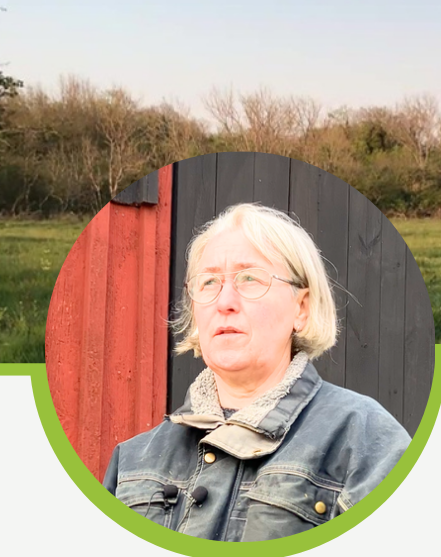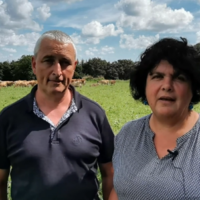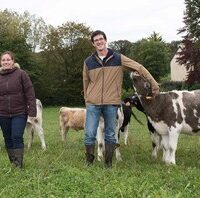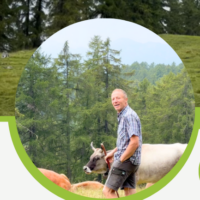Optimising post-harvest grazing and semi-natural grasslands in lamb production
Linda af GEIJERSSTAM – Improvement of grassland management
PDF Practice abstract (english)
Description
Practice abstract
Linda af Geijersstam runs the farm Torslundalamm in South-east Sweden. The farm has 10 ha arable land and 20 ha semi-natural grasslands and silvopastures. The farm has 20 ewes of the sheep breed Helsingefår, a heritage breed, production of meat, furs and wool, and some fodder for sale. The sheep graze mainly semi-natural grasslands. The sale of breeding animals is also important as the sheep are a heritage breed.
The production demands animals that can graze semi-natural grasslands and the lambs must grow enough during the grazing season to be ready for slaughter. There must be enough pasture and grass production through the whole grazing season, even during recurring drought periods. Control of parasite levels is also a challenge.
After the first cut, the land is divided into paddocks by electric fences and grazed by ewes and lambs. Easily manageable fences and water tank stations are important. During post-harvest grazing it’s very favourable to rotate the animals. The pressure from parasites decreases, there are less ungrazed spots left and there’s less need for topping. It’s also possible to fill up the fodder demand during droughts and the grass production continues much longer in autumn so the lambs will have enough to graze until slaughter.
The grazing management also involves animals grazing on semi-natural grasslands. The ewes selected as breeding animals and older ewes are moved to semi-natural grasslands. When the lambs are separated in July the ewes are moved to the semi-natural grasslands. Both the semi-natural grasslands and the temporary grasslands are co-grazed by cattle and horses. If the semi-natural grasslands are properly grazed in autumn, the growth in spring is delayed and grazing pressure will be easier to keep in spring.
Context profil
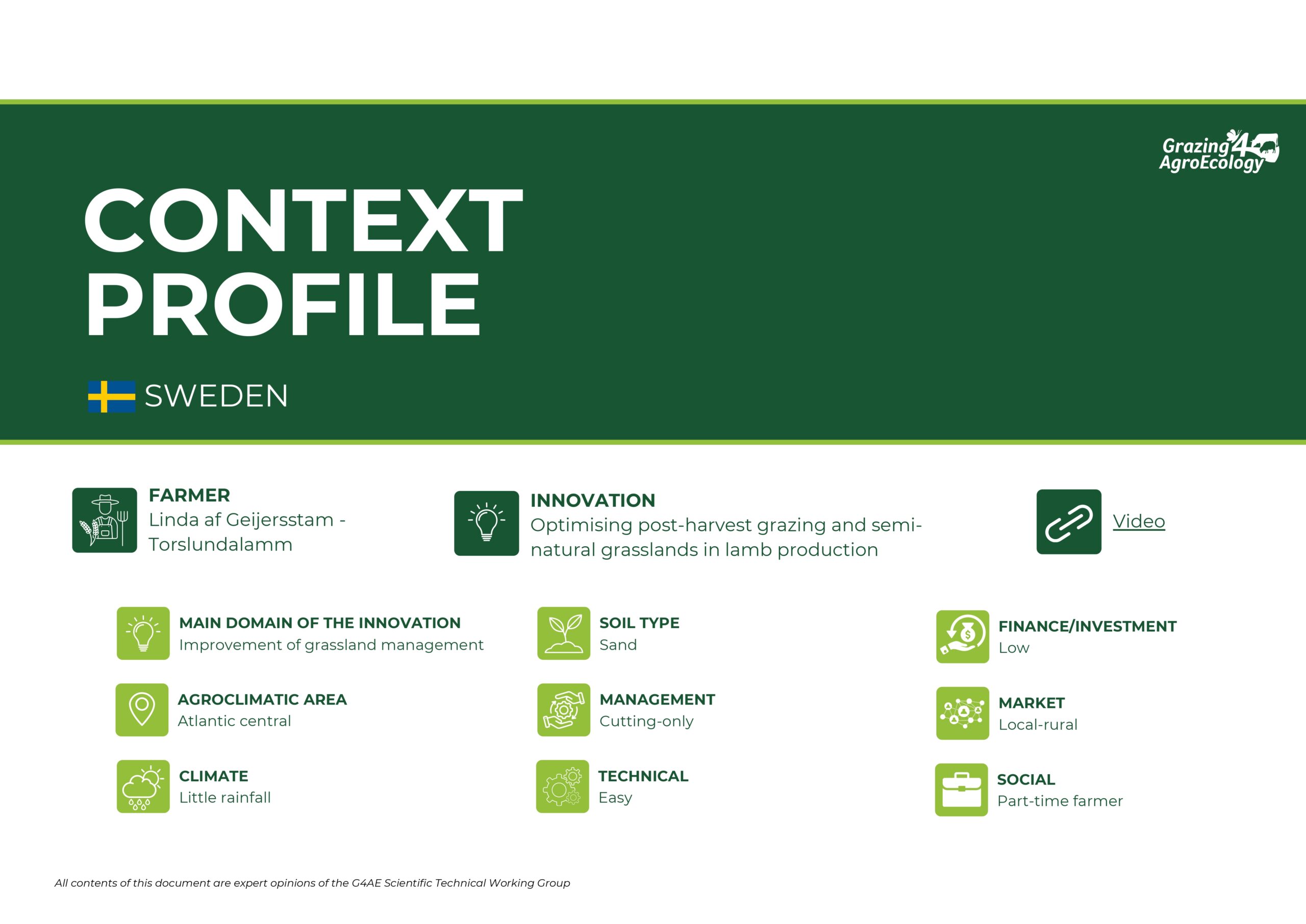
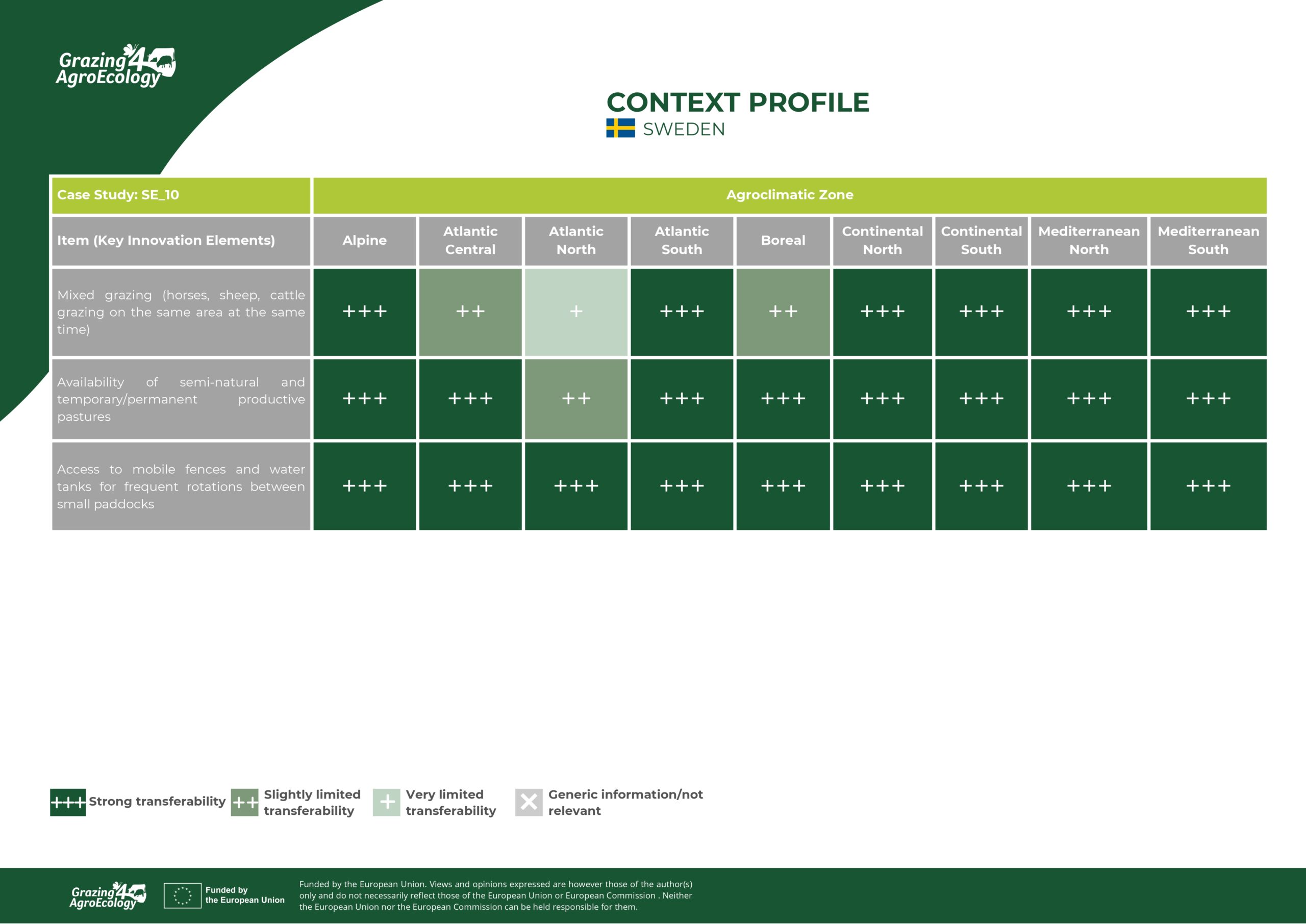
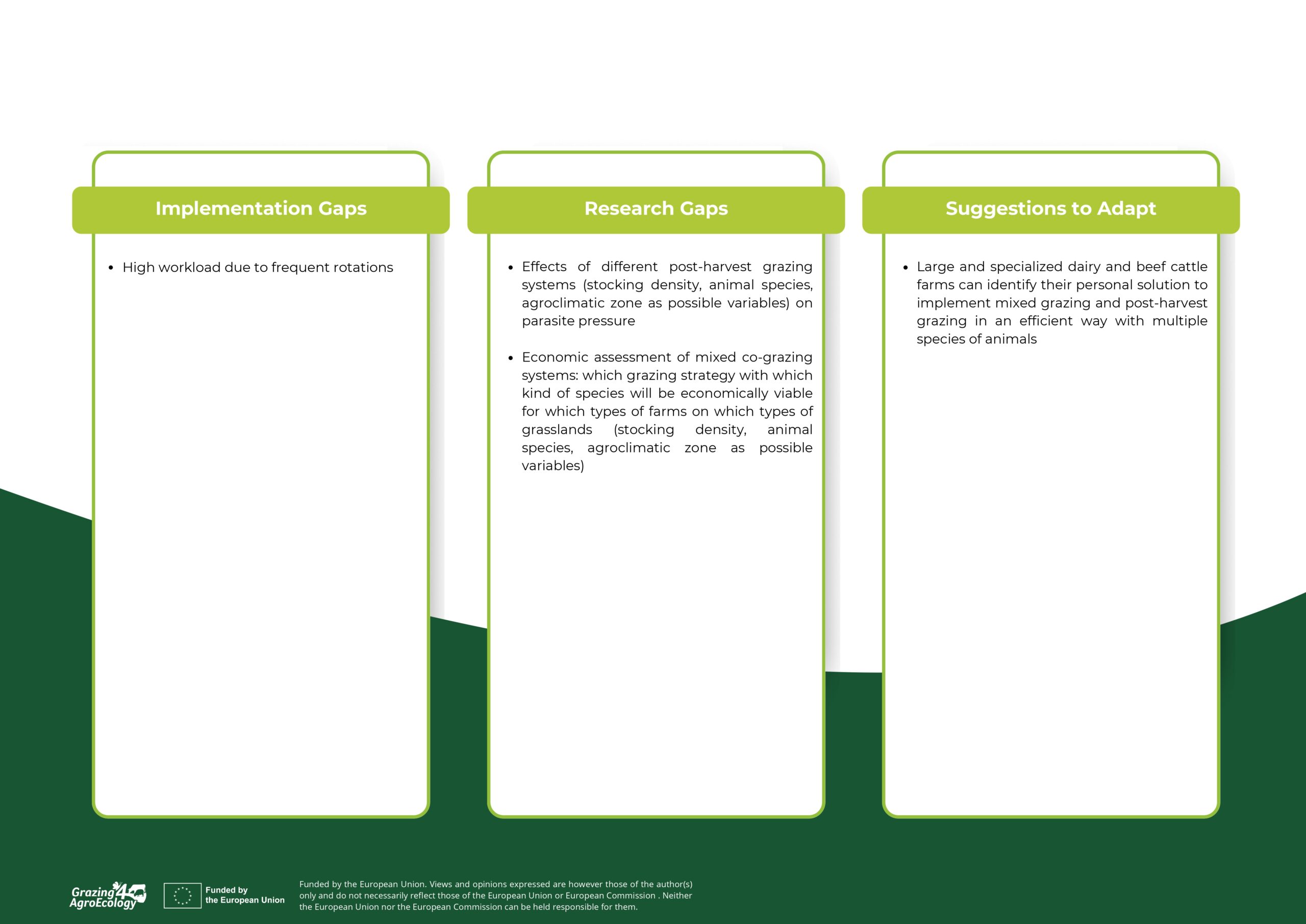
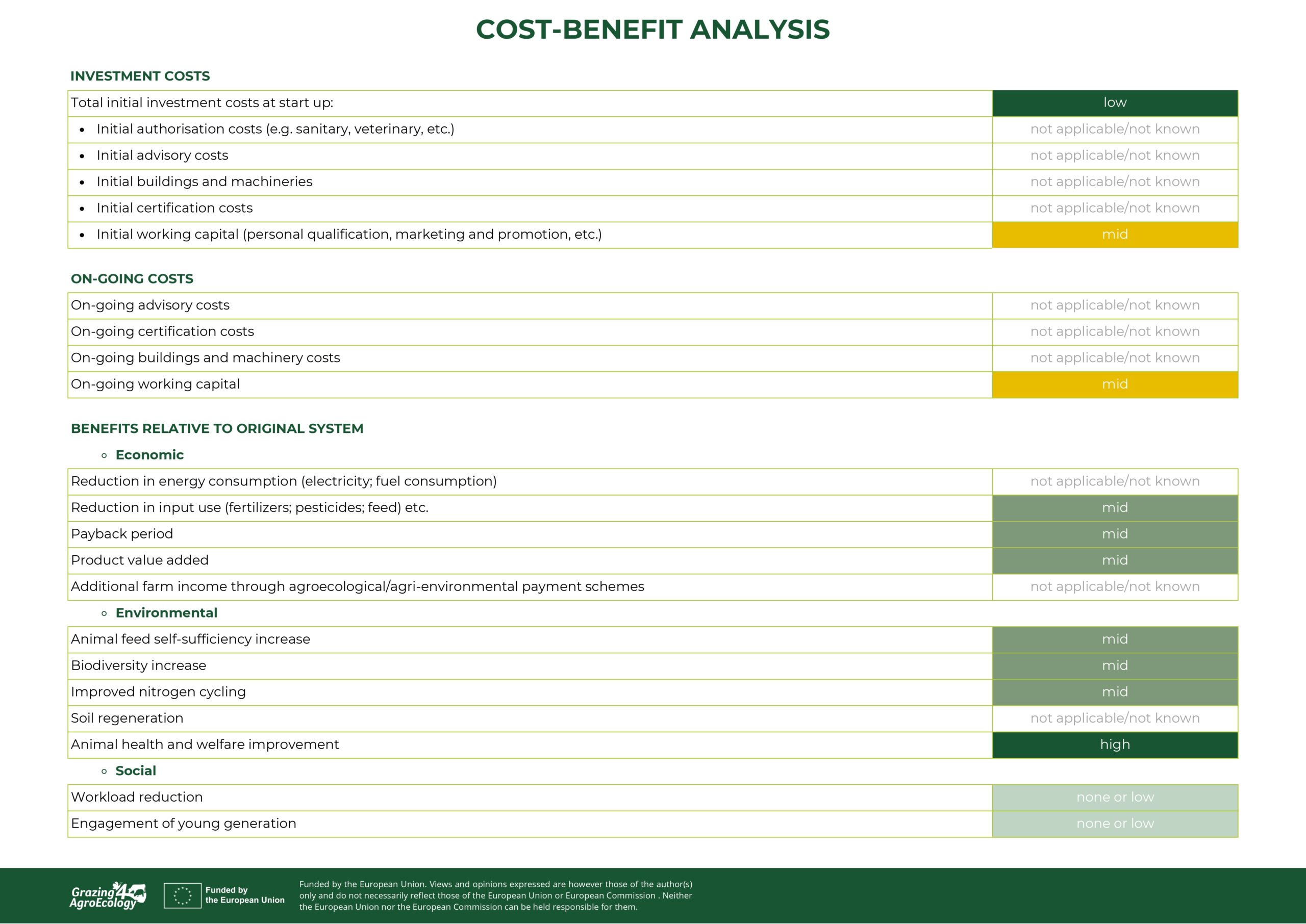

Additional information
| Main domain of innovation | |
|---|---|
| Agroclimatic area | |
| Climate | |
| Soil Type | |
| Management | Cutting-only |
| Technical | Easy |
| Finance/investment | Low |
| Market | Local-rural |
| Social | Part-time farmer |
| Country | |
| Language |
